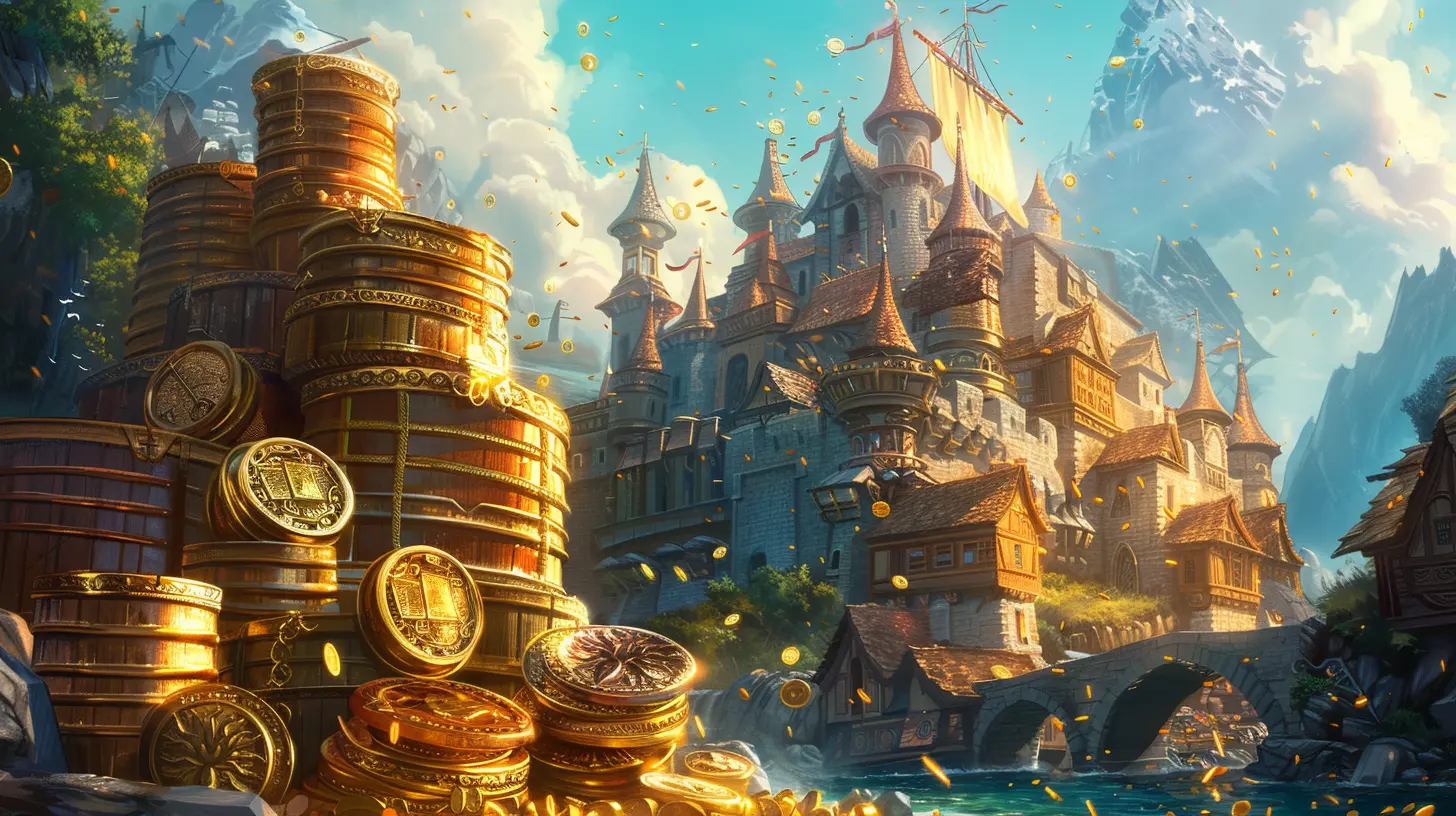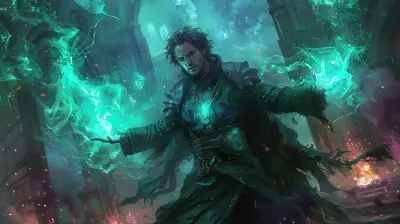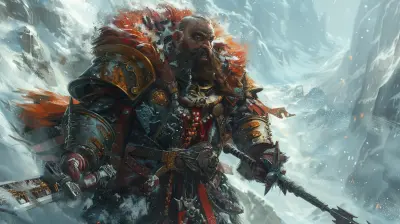Game Monetization Models: How to Implement In-Game Economies Without Ruining Player Experience
18 June 2025
Let’s be real for a second—making games is expensive. Especially nowadays, with all the bells and whistles players expect. But here’s the kicker: while devs need to make money, nobody wants to play what feels like a glorified cash grab. So how do you strike the perfect balance? How do you monetize your game without sucking the soul out of it?
If you’re a game developer—or even just curious about how in-game economies work—you’re in the right place. In this guide, we’re going to break down different game monetization models and chat about how to weave them into your game without sending your players running for the uninstall button.
Why Monetization Matters (But Also Needs A Soft Touch)
Let’s face it. Game studios can’t keep the lights on with goodwill. Whether you're an indie dev grinding in your bedroom or a team at a big studio, revenue matters. Monetization pays salaries, keeps servers running, and lets you build even better games.But here’s the thing—players are savvy. They can smell greed from a mile away. If your monetization strategies mess with their fun, they’ll bounce. Or worse, they’ll flame your game in reviews and forums. Every decision you make about how to earn money in your game literally affects if people will stick around or ghost you forever.
So the goal? Make money, sure… but make it feel fair, rewarding, and transparent.
The Evolution of In-Game Economies
Let’s take a quick walk down memory lane.Back in the day, you bought a game once and that was it. You shelled out 50 bucks, got a shiny disc, and played the whole thing start to finish with no interruptions.
Then mobile gaming exploded. Suddenly, games were free... but they had ads, premium currencies, and microtransactions. And while many players adapted, it also sparked a lot of backlash.
Now? Modern players expect a balance. They’re okay with paying—just not in a way that feels manipulative or unfair.
1. Premium Model: Pay Once, Play Forever
This is the OG model. Players pay upfront and get the full game, no strings attached.Pros:
- No surprises or hidden fees.- Great for narrative-driven games or single-player experiences.
- Builds trust from the get-go.
Cons:
- Limits ongoing revenue.- Some players might hesitate to pay without trying the game first.
Best For:
- Indie games with strong storytelling.- Puzzle games or titles with limited replayability.
Think of it like buying a movie ticket. You know what you're getting, and that’s it. Clean. Simple. Respectful.
2. Freemium Model: Free to Play, Pay for Extras
This is one of the most popular models today. Think Fortnite, Clash Royale, or Genshin Impact.Pros:
- Low barrier to entry—anyone can try your game.- Opens the door to a massive player base.
- Ongoing monetization potential.
Cons:
- If not done carefully, can become “pay-to-win.”- May alienate non-paying players if items give unfair advantages.
Best For:
- Multiplayer games.- Games with ongoing updates or seasonal content.
The key here? Don’t make paid players “overpowered.” Sell cosmetics, skips, or convenience—not raw power.
3. Subscription Model: A Monthly Commitment
Think Xbox Game Pass or Apple Arcade. Some games use this within their own ecosystem too—MMOs like World of Warcraft have been doing it forever.Pros:
- Predictable revenue stream.- Encourages long-term engagement.
- Lets you add continuous new content.
Cons:
- Harder to sell unless the game offers tons of content.- Can scare off casual players.
Best For:
- MMOs, large-scale RPGs.- Games with big communities and regular updates.
This model’s like Netflix. As long as players feel they’re getting value, they’ll keep paying.
4. In-Game Purchases: Microtransactions & Virtual Goods
This is where the real money is made. Skins, loot boxes, emotes, XP boosters, you name it.Pros:
- Can generate serious revenue.- Players love personalization.
- Offers flexibility in what’s sold.
Cons:
- Loot boxes can be controversial (and even banned in some countries).- “Pay-to-win” dangers again.
Best Practices:
- Be transparent about odds in loot boxes.- Let players earn premium currency (albeit slowly).
- Make sure purchases are optional and don’t gate content behind a paywall.
Want a metaphor? Think of microtransactions like tipping at a restaurant. They should be optional and feel good—not mandatory or expected.
5. Ads: Love Them or Hate Them
Ad-based monetization is common in mobile games. Banner ads, rewarded ads (“Watch this video for 100 gems!”), or interstitial ads that pop up between levels.Pros:
- Keeps the game free.- Rewarded ads give players a sense of control.
Cons:
- Can break immersion if done poorly.- Too many ads = uninstall city.
Tips:
- Stick to rewarded ads—they’re the least intrusive.- Space out interstitials and give players a breather.
Ads can be like background noise—fine if used sparingly, but overwhelming if blasted in your face.
Implementing In-Game Economies Without Losing Your Players
So now you know the models. But how do you actually implement them without ruining your game’s vibe?Here’s where the rubber meets the road.
1. Respect the Player’s Time
Players notice when a game wastes their time. If everything takes ages unless they pay, you’re doing it wrong.Instead, balance time gates with meaningful progress. Let players feel rewarded, whether they spend money or not. Design your game so paying speeds things up, not unlocks content that free players can never reach.
2. Transparency = Trust
Be upfront. If a skin costs $5, say that. Don’t bury it behind three currencies and a mystery box.Also, let players preview what they’re buying. Who wants to spend money only to get an ugly sword?
If you’re using loot boxes, show the odds. It builds trust—and may even be required by law.
3. Make Spending Feel Good
This one’s big. If someone buys something in your game, they should feel awesome—not like they just got conned.Make animations juicy. Add sound effects. Celebrate the moment. Buying something should enhance the experience, not take away from it.
4. Keep It Fair and Balanced
Pay-to-win is the quickest way to kill your game. Nobody likes being outmatched just because someone else spent more money.Instead, sell customization, cosmetics, or convenience. Let paying players look cooler or progress a bit faster—but never at the cost of fairness.
5. Offer Value, Not Greed
Bundle items fairly. Offer sales occasionally. Give players small freebies to encourage them.Make your in-game shop feel like a fun bonus, not a haunted house of overpriced junk. If players feel like they’re getting good value, they’ll spend more.
Psychology Behind Spending in Games
Let’s get into the player's head for a second.People spend in games because it triggers satisfaction. It gives them control, status, or joy. But they also have spending limits and emotional reactions.
If your monetization feels rewarding, they’ll keep coming back. If it feels manipulative? It breaks trust—and trust is super hard to rebuild.
Think of your in-game shop as a real store. Would you shop somewhere that tricks you or pushes you constantly? Neither would your players.
How To Test and Iterate Your Monetization Model
Game development doesn’t stop at launch. Your monetization needs testing just like your combat system or level design.Start with soft launches. Track data. Read reviews. Watch how players engage with your shop or ads.
And most importantly—listen. Communities are vocal. If they hate a monetization mechanic, they’ll tell you. Don’t ignore that feedback; use it to adjust and improve.
The Golden Rule: Fun Comes First
Here’s the ultimate truth bomb—if your game isn’t fun, no monetization model will save it.Players are here to be entertained. They want immersion, challenge, and joy. Monetization should support that, not detract from it.
When you build an experience that feels good at every level, players will be more than happy to support you financially.
Final Thoughts
Monetizing games isn’t inherently evil—and players know that. Most people are happy to support games they love. The real challenge is making that support feel optional, meaningful, and fair.Treat your players with respect. Design your in-game economy like it’s part of the gameplay—not a cash trap. Keep things balanced, transparent, and fun.
Because at the end of the day, your success doesn’t just depend on how much money your game makes—it depends on how many players stick around for the ride.
all images in this post were generated using AI tools
Category:
Game DesignAuthor:

Francesca West
Discussion
rate this article
2 comments
Zelda Whitley
Great read! Finding the balance between monetization and player enjoyment is tough but crucial. It's all about creating a rewarding experience without players feeling nickel-and-dimed. Excited to see what innovative models developers come up with next!
September 22, 2025 at 3:46 AM

Francesca West
Thank you! Finding that balance is essential, and I appreciate your insight. Exciting times ahead for game developers!
Soraya Pratt
Balance profit and player experience wisely.
June 20, 2025 at 4:16 AM

Francesca West
Absolutely! Striking the right balance between profit and player experience is crucial for sustainable game success. Prioritizing player satisfaction while implementing monetization strategies enhances retention and ultimately boosts revenue.


